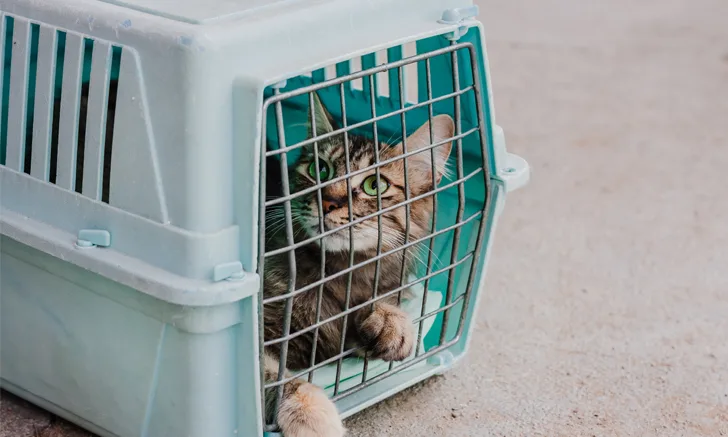
In the Literature
Karn-Buehler J, Kuhne F. Perception of stress in cats by German cat owners and influencing factors regarding veterinary care. J Feline Med Surg. 2022;24(8):700-708. doi:10.1177/1098612X211041307
The Research …
Stress in cats at the veterinary clinic typically occurs due to being away from the safety of the home and having no control over the environment or resources.1 Cat owners can also be anxious or stressed during clinic visits.2
In this study, cat owners in Germany were surveyed about their relationship with their cat, identifying pet behavior, stress when visiting the clinic, and feline-friendly handling in the clinic. Of the 889 responses, 50.8% (419/824) reported experiencing negative emotions (eg, nervousness, anxiety) at the clinic and described visits as stressful; most respondents (88.7% [732/825]) felt the experience was stressful for their cat. In addition, owners who experienced stress were more likely to describe their cat as also being stressed.
Survey results showed many cats exhibited signs of frustration while in the carrier, including vocalization in >50%. Feline-friendly examination methods (eg, towel wrapping technique) were rarely used in the clinic; however, 89% (704/791) of owners considered their clinician to be feline friendly if they perceived few or no signs of stress or aggression from their cat toward the clinician. Owner satisfaction was generally high when the cat was perceived to be treated with patience and respect. Owner perception of their cat’s stress during restraint by the scruff was also evaluated; cats were perceived to be significantly more fearful and stressed when this restraint technique was used.
… The Takeaways
Key pearls to put into practice:
A quiet environment that fosters respectful relationships with owners should be implemented in the clinic. The clinician should ask open questions, listen without interruption, maintain eye contact, and use welcoming body language to reinforce their interest in and empathy toward the owner’s concerns.
The owner should understand the process of examination, with an explanation given beforehand if part of the examination or treatment could cause fear or anxiety. Feline-friendly handling techniques (eg, towel wrapping, soft bedding, gentle handling) and additional methods (eg, pheromone diffusers, avoiding encounters with dogs, allowing exploration of the examination room) taken to reduce patient stress in the environment should be explained to help reduce owner stress.
Staff members should be encouraged to pursue certification for feline-friendly practices and promote these skills on social media to show the clinic’s commitment to patient comfort.
Transporting cats out of the home environment may exacerbate patient and owner stress, which can have significant negative consequences at the clinic. Owners should be educated about carrier techniques (eg, leaving a carrier open in the living space, inserting comfortable bedding, giving treats for entering the carrier) and which type of carrier is easiest to use.
You are reading 2-Minute Takeaways, a research summary resource presented by Clinician’s Brief. Clinician’s Brief does not conduct primary research.